Q&A: How Pressure in the Marketplace Could Enforce PBM Reform
PBM expert Antonio Ciaccia, president of 3 Axis Advisors and CEO of 46brooklyn Research, discussed recent events in the pharmacy benefits industry and how it is moving toward PBM reform.
Throughout 2025, and at the end of 2024, the pharmacy benefits industry was nearing pharmacy benefit manager (PBM) reform on the federal level that would cause significant change in the prescription drug marketplace. While this reform continues to stall, however, various players within the drug supply chain are finding other, non-legislative ways of disrupting the industry and creating pressure that may enforce change.
“A good friend of mine, Greg Reybold, who works for the American Pharmacy Cooperative, Incorporated, which is an independent pharmacy buying group, he uses the phrase often, ‘Pressure busts pipes,’” said Antonio Ciaccia, president of 3 Axis Advisors and CEO of 46brooklyn Research. “One way or another, I think all of these things could represent reform, but they also may not necessarily be the reform, but they could be the catalyst for reform.”
To discuss the potential catalysts for PBM reform, and ongoing changes to the ways drugs are priced in the US, Ciaccia provided the expert insights he’s gained throughout his work in uncovering PBM practices and working with pharmacy industry employees to help them understand the complex market.
READ MORE:
Drug Topics: What are the current happenings in the marketplace that are working toward PBM reform?
Antonio Ciaccia: I think it’s important to realize that PBMs themselves are starting to indicate willingness—or at least through words and actions, or one of the two, or in between—to change. You have the big 3 PBMs. CVS has announced their new true cost and cost-vantage program, which is intended to try and create a different scheme of reimbursement that is more cost-oriented, which is where a lot of the pressure of the marketplace is gravitating towards. OptumRx recently announced a similar type of program, and Express Scripts has been doing different types of niche models as well that are intended to indicate disruptive opportunities for payers and pharmacies as well.
Now, obviously the proof will be in the pudding on those models. But again, reform doesn’t just happen by other people forcing it necessarily. Whether legitimate endeavors have changed or not, the legacy PBMs are also indicating a possible willingness to evolve from within.
I think there's 3 main buckets of PBM reform: One is legislation, one is litigation, and another is market-based solutions. A good friend of mine, Greg Reybold, who works for the American Pharmacy Cooperative, Incorporated, which is an independent pharmacy buying group, he uses the phrase often, “Pressure busts pipes.” One way or another, I think all of these things could represent reform, but they also may not necessarily be the reform, but they could be the catalyst for reform. The more that the marketplace—whether that's reporters, employers, patients, pharmacies, plan sponsors, governments—the more that they understand how the marketplace works, good or bad, the better equipped they are to calibrate that market and create their own environment for reform.
READ MORE:
Pharmacy practice is always changing. Stay ahead of the curve: Sign up for our
Newsletter
Pharmacy practice is always changing. Stay ahead of the curve with the Drug Topics newsletter and get the latest drug information, industry trends, and patient care tips.






































































































































